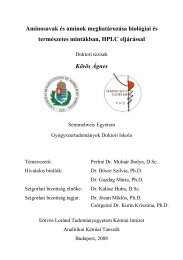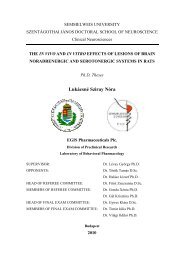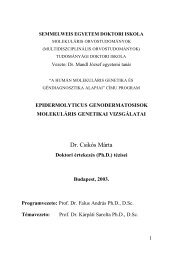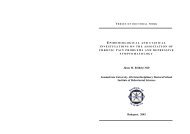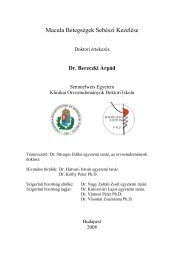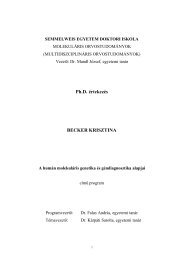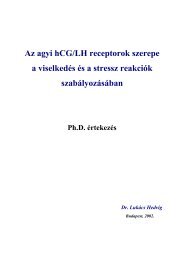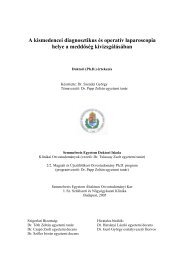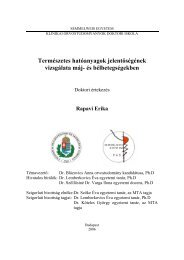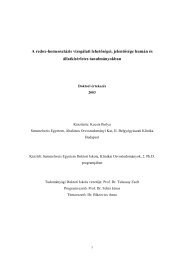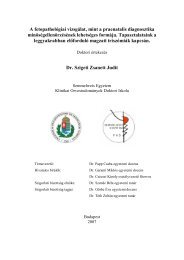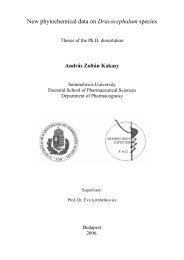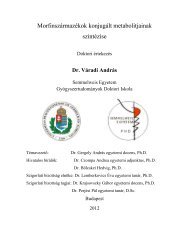dr. Zádori Anita - Semmelweis Egyetem Doktori Iskola
dr. Zádori Anita - Semmelweis Egyetem Doktori Iskola
dr. Zádori Anita - Semmelweis Egyetem Doktori Iskola
Create successful ePaper yourself
Turn your PDF publications into a flip-book with our unique Google optimized e-Paper software.
Summary<br />
Data obtained from in vitro and in vivo studies on NE-4C neuroectodermal stem cells<br />
and on sub-clones expressing histological markers demonstrated that the intracerebral<br />
fate of implanted neural stem cells is governed by the actual state of the host<br />
environment.<br />
� Non-induced stem cells do not survive in, and can not integrate into the intact<br />
adult brain parenchyma. In contrast, implanted stem cells survive for long (>60 days)<br />
time in damaged brain cortices and can repopulate lesioned zones. The implanted<br />
neural stem cells, however, do not differentiate to neurons either in lesioned or in<br />
intact adult brain (<strong>Zádori</strong>, Ágoston et al., Neuropathol Appl Neurobiol. 2007<br />
Oct;33(5):510-22).<br />
� NE-4C neural stem cells can survive inside of some glioma-type neoplastic<br />
tissues, but can not „find” the tumors inside the brain indicating that the investigated<br />
tumours do not produce (enough) chemotactic signals to attract stem cells (Demeter<br />
et al., Neurosci Res. 2005 53(3):331-42).<br />
� Neural precursors at early stages of in vitro induced neuronal differentiation did<br />
not show improved tissue-integration or in situ neuron formation in comparison to<br />
non-committed stem cells.<br />
� In vitro, non-induced stem cells grow readily at low (1%) oxygen concentration<br />
and, apparently, are not damaged by hypoxia. Committed neural precursors, on the<br />
other hand, display increased sensitivity to hypoxia. At defined stages of neural<br />
differentiation, low O2-tension reduces the rates of neuron-production, markedly (*).<br />
� The hypoxic environment in lesioned cortices seems to inhibit local neuron-<br />
production, but does not prevent the proliferation of the implanted stem cells.<br />
� Hyperbaric oxygen therapy reduces both, the intracerebral cell proliferation and<br />
apoptosis at the lesion site, and makes the environment more permissive for<br />
formation of neurons (*). (*: <strong>Zádori</strong> et al. 2010, submitted)<br />
Our studies proved, that the fate of implanted neural stem cells is determined by the<br />
host environment. The intracerebral neuron-formation was not improved by implanting<br />
committed progenitors at early phase of neural commitment. Among the parameters of<br />
the host environment, oxygen tension is one of the essential regulators of the stem cell<br />
fate.<br />
102



